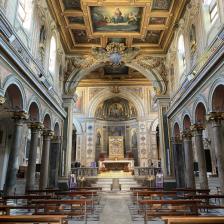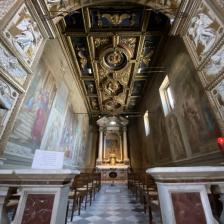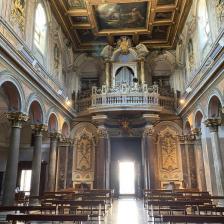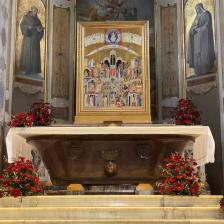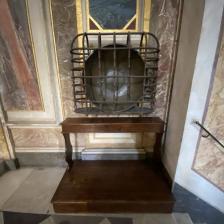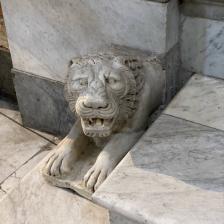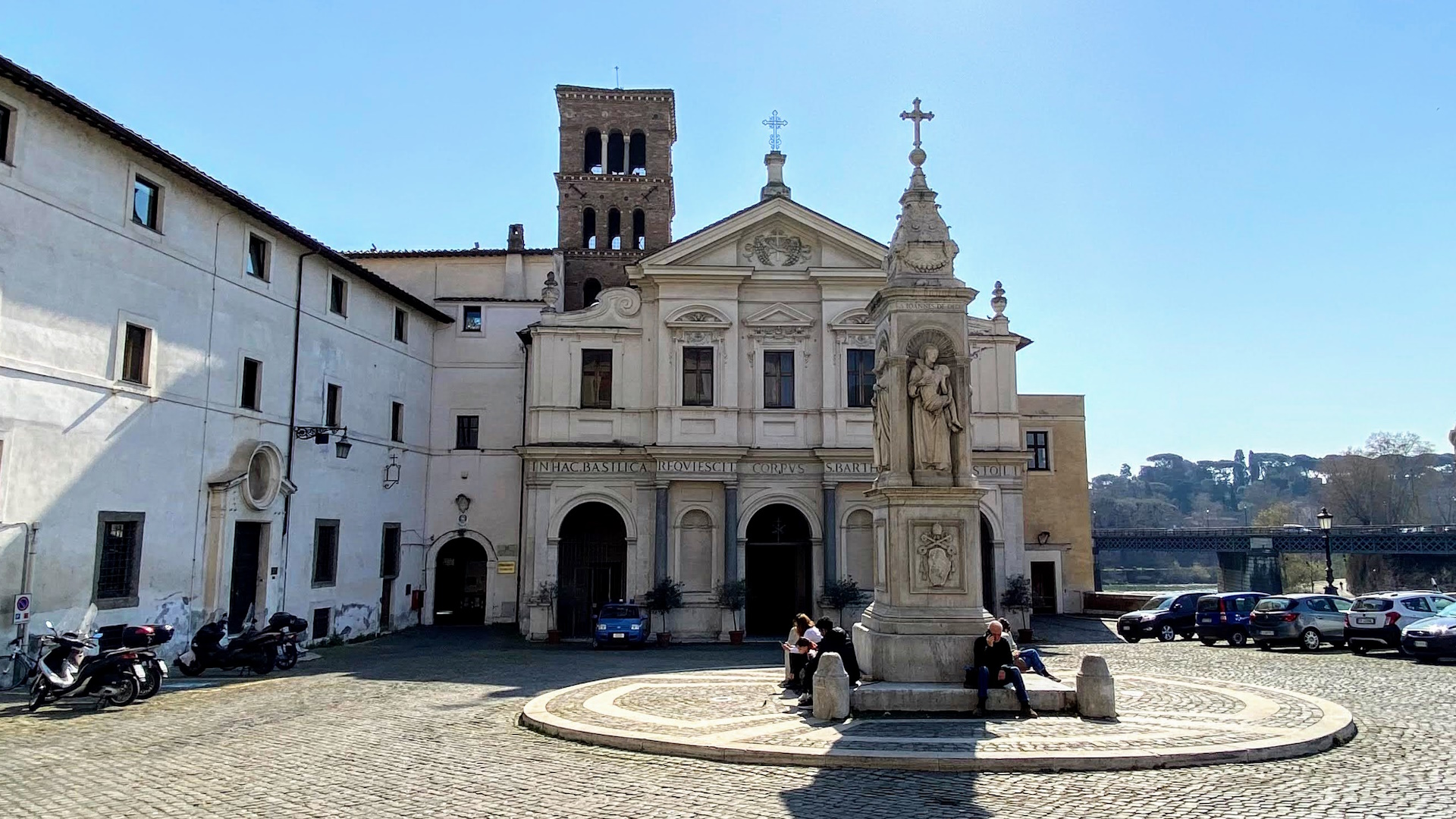
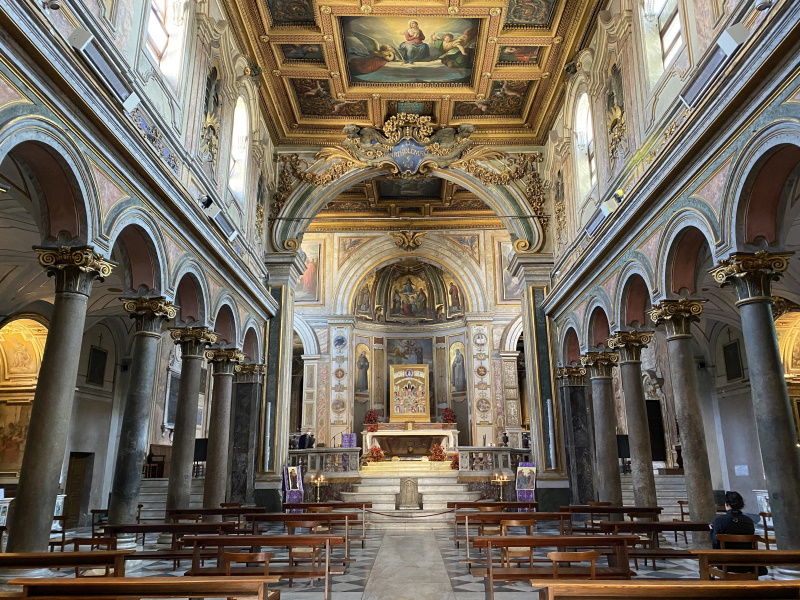
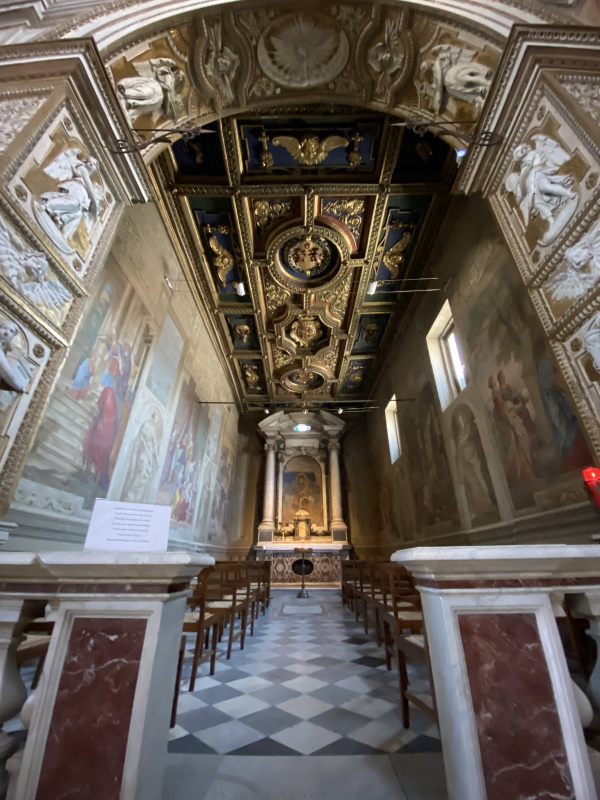

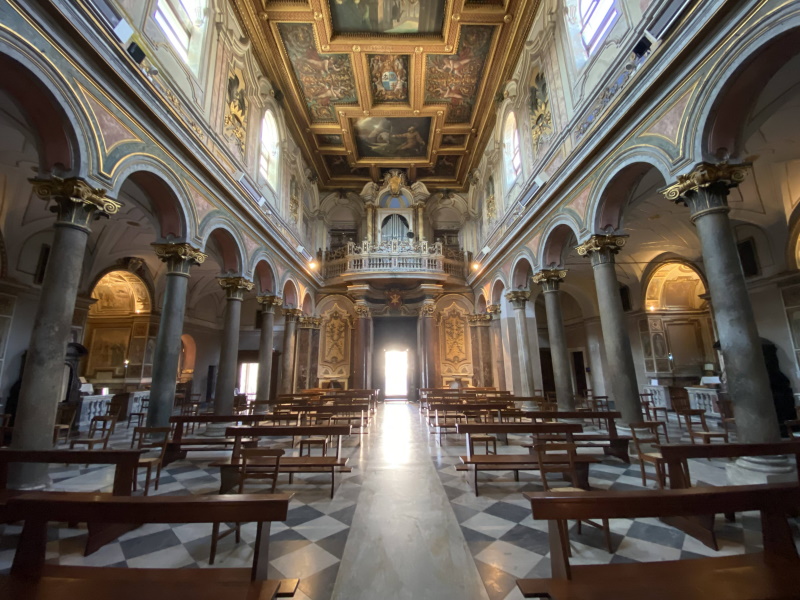
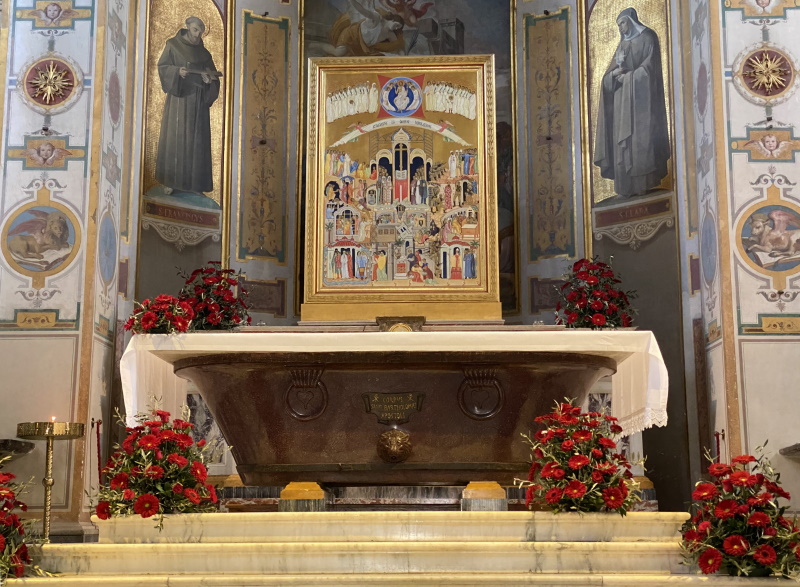
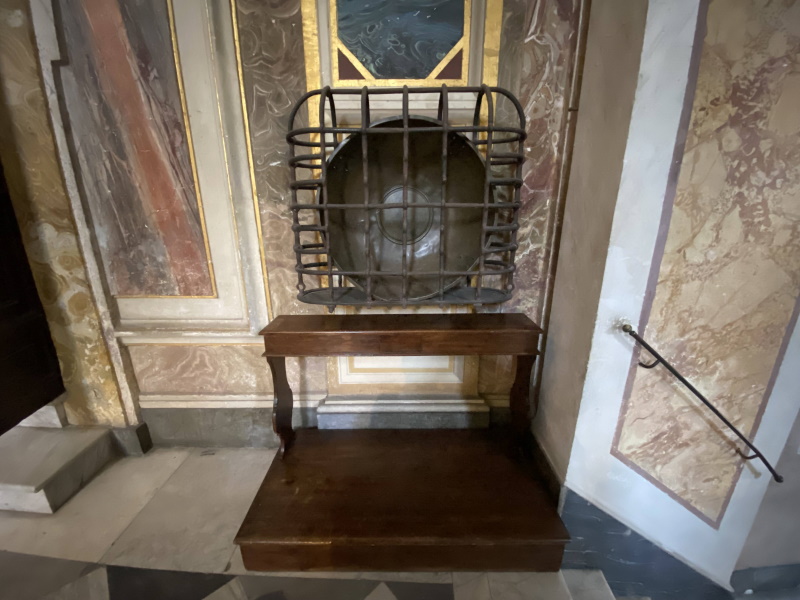
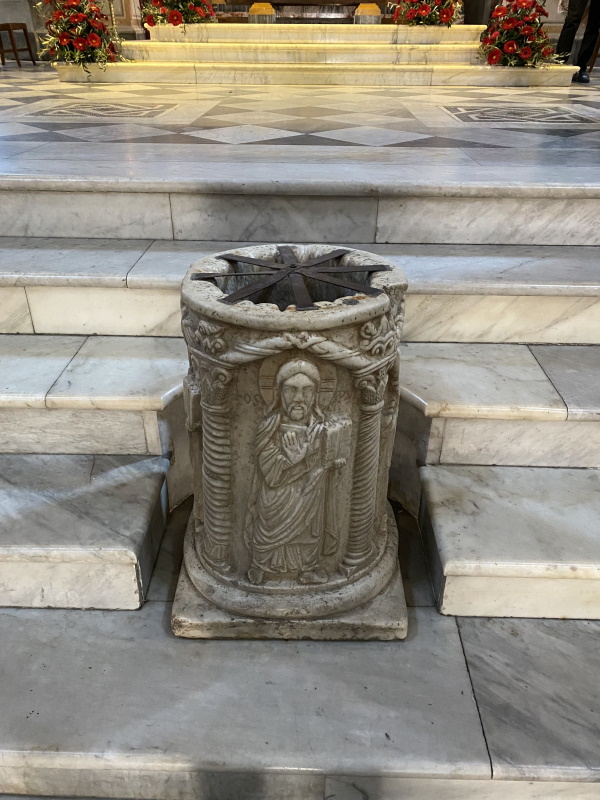
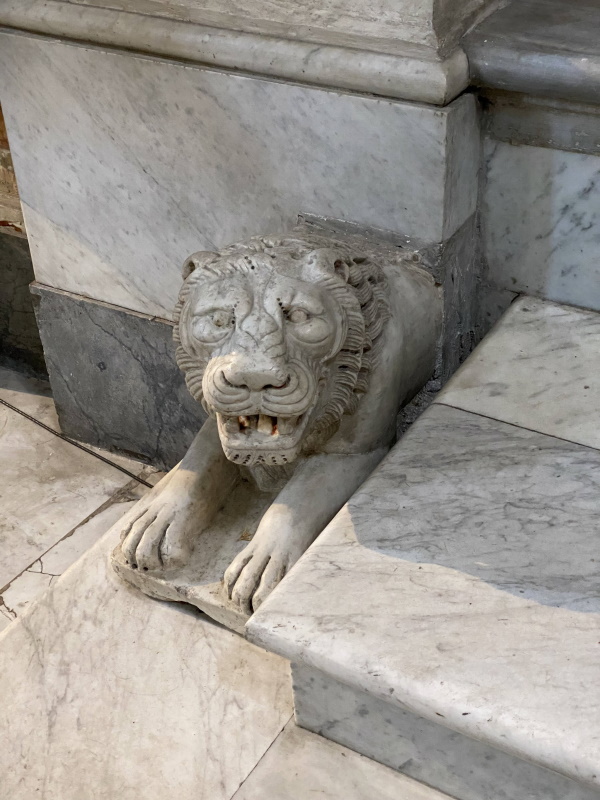
On the Tiber Island, between Rione Trastevere and the Jewish Quarter, stands the thousand-year-old church of San Bartolomeo all'Isola, built at the end of the 10th century by the will of Emperor Otto III on an ancient temple dedicated to Aesculapius, god of medicine.
Initially dedicated to Sant'Adalberto, it was the subject of numerous restoration works between the 11th and 12th centuries.
Irreparably damaged by a flood of the Tiber in 1557, the sacred building was rebuilt in the 17th century by the architect Orazio Torriani. Externally, San Bartolomeo all'Isola has a Baroque façade on two floors and a Portico; internally, it presents three naves supported by ancient columns. In the church are kept the remains of Saint Bartholomew the Apostle, whose body rests in the red porphyry sarcophagus under the high altar, and those of Saint Adalbert, bishop of Prague, killed in 997, while intent on evangelizing the pagan populations of Northern Europe.
Among the most captivating works you can admire in the church, we mention the Flagellation of Christ, a painting by Antonio Carracci (1589-1618), grandson of Hannibal.
The church is also known to be the seat of the "Venerable Brotherhood of devotees of Jesus Christ on Calvary and Mary Most Holy of Sorrows," a congregation founded on the initiative of a group of faithful in 1760. The brotherhood obtained permission from Pope Pius VI Braschi to create a cemetery for the deceased brothers in the basement. During the burial, the followers wore a red cloak with a hood that earned them the popular name of Sacconi Rossi. They recovered the corpses found in the Tiber whose bones they defleshed and then laid in the crypt of the convent that became a cemetery like the most famous crypt of the Capuchins in Via Veneto.
Photo: Redazione Turismo Roma
The Tiber Island
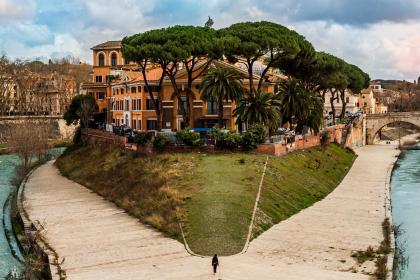
 Condividi
Condividi
Rione XIII - Trastevere
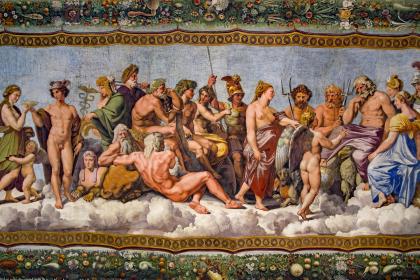
The old Jewish Quarter
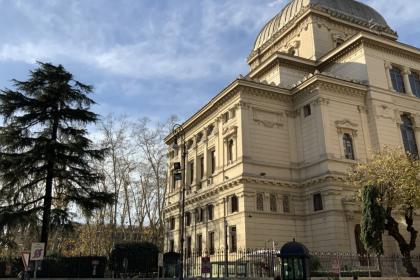
 Condividi
Condividi
The Church of Santa Maria della Concezione of the Capuchins
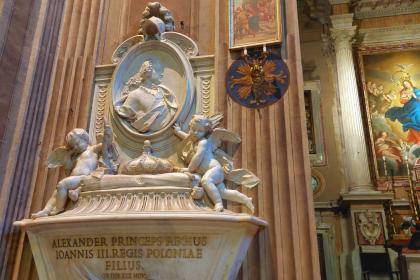
 Condividi
Condividi
Information
Opening hours of the Memorial of the New MartyrsSaturdays from 09.30 to 13.30 and from 15.30 to 17.30 and by appointment by filling out the form at the link below > CONTACTS - SAN BARTOLOMEO - MEMORIALE DEI NUOVI MARTIRI
Celebrations of Holy Masses: Sunday: 11.30, 18.30Prayer of the Community of Sant'Egidio from Monday to Friday at 20:00*On the 1st and 3rd Monday of the month the Community of Sant'Egidio prayer at 20:00 is held in the Basilica of Santa Maria in Trastevere.
Times may be subject to change, so please always contact the Church
 Condividi
Condividi
Location
To find out about all accessibility services, visit the Rome accessible section.












































